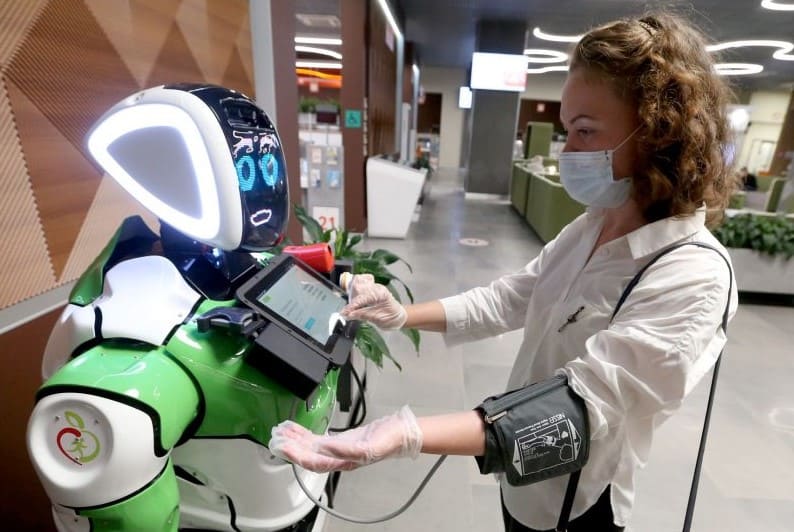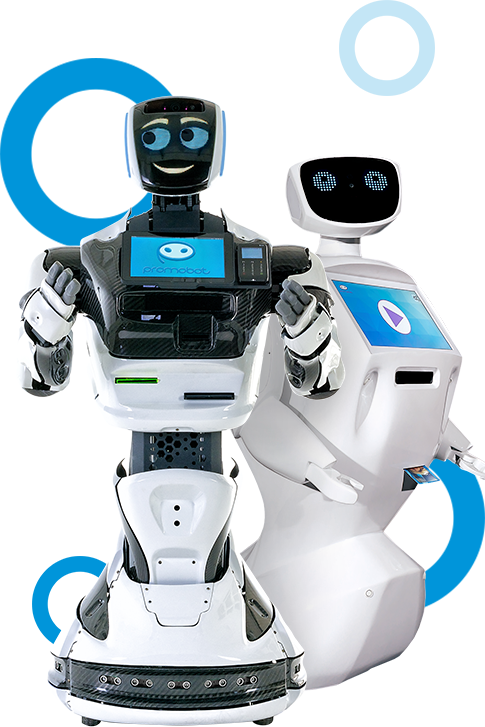Here’s how robots changed the health checkups and doctor visitations.
Our safety standards have drastically changed after the new coronavirus took over countries in 2020. Today, masks, disinfection, and thermometers in buildings are as typical as metal detectors or video surveillance. Some intimate routines took a new form, too: before that, a person would take doctor appointments and personal hygiene as that, something personal. Now, the new standards apply to our private life just the same. People must think about hygiene in public areas, to a degree of emotional discomfort, but with numerous advantages all the same. People can now measure their health status and receive protective essentials almost anywhere they go. But what do robots have to do with it? Let’s find out.
Disclaimer: This article mentions various medical equipment. Please consult your healthcare provider for medical advice and how it applies to you.
Interpersonal contacts
Problem: the coronavirus travels through the air and upon contact with surfaces.
Solution: replace people with machines, if possible.
To limit the exposure of people to the virus, you need to stop interacting with people. Easy enough, right? Maybe except when you need to buy groceries, talk to a cashier, or go somewhere in the city and use public transport. There is an alternative ― you need to get in contact with something other than people. And that is where the robots come into the picture.
Earlier this year, a humanoid robot has started working in the civil services in cities. It serves citizens and works shoulder to shoulder with its human coworkers.
Another development from Promobot is their flagship model V.4. It now includes medical equipment to measure the body temperature and blood pressure of people. Individual clinics use it for patients before their blood test. As a result, the robot links the doctor and the patient, making the interaction safe and quicker.
Overwhelming tasks of hospital workers
Problem: the healthcare industry faces an enormous workload due to the pandemic.
Solution: automate everything that can be automated.
There are multiple reasons why half the world decided to go into a lockdown. First, it helps limit human interactions. Second, it eases the pressure that medical workers face in a public healthcare crisis. It took a worldwide crisis to realize that doctors could get sick, and there are only so many beds in hospitals. Read this Lifespeak interview to learn more about the everyday routine of healthcare workers.
Robots assumed some of that routine. Beep’s autonomous buses transfer the coronavirus tests in Jacksonville, Florida. Nuro’s R2 sends medicine to hospitals across California. V.4 robots measure more than a few health indicators: saturation, lung capacity, body temperature, blood pressure, and oxygen. The patient can get all the information from just one chat with the robot; the doctor doesn’t occupy themselves with initial testing and goes straight into the analysis and interview.
Tests everywhere
Problem: you need a lot of resources to prevent diseases ― from testing to doctors.
Solution: make tools available and testing more widespread.
Healthcare is now a public matter, and you can’t keep it to a yearly doctor’s visit anymore. Our public spaces are now a part of healthcare: we measure temperature in stores and use disinfectors in gyms. These days, there are multiple ways to track health indicators.

Medical Assessors robots by Promobot are already working in different locations around the world. They are free to use for everybody; people measure their body temperature, blood sugar levels and pressure, lung capacity, and other things. Robots feature non-invasive methods and disposable materials for better safety. People engage with robots just as good, if not better, as with doctors. The robot’s appearance entertains them, they don’t experience the stress of interaction with doctors, plus they get to know the essential info on their health.
And this is how robots are becoming a part of the new, after-covid world. The advantages of robotics became even more apparent when we all had to lock ourselves down: machines don’t get tired, they don’t need salaries or paid leaves. But what’s most important is that they don’t spread diseases. That, alone, gives them an upper hand.


